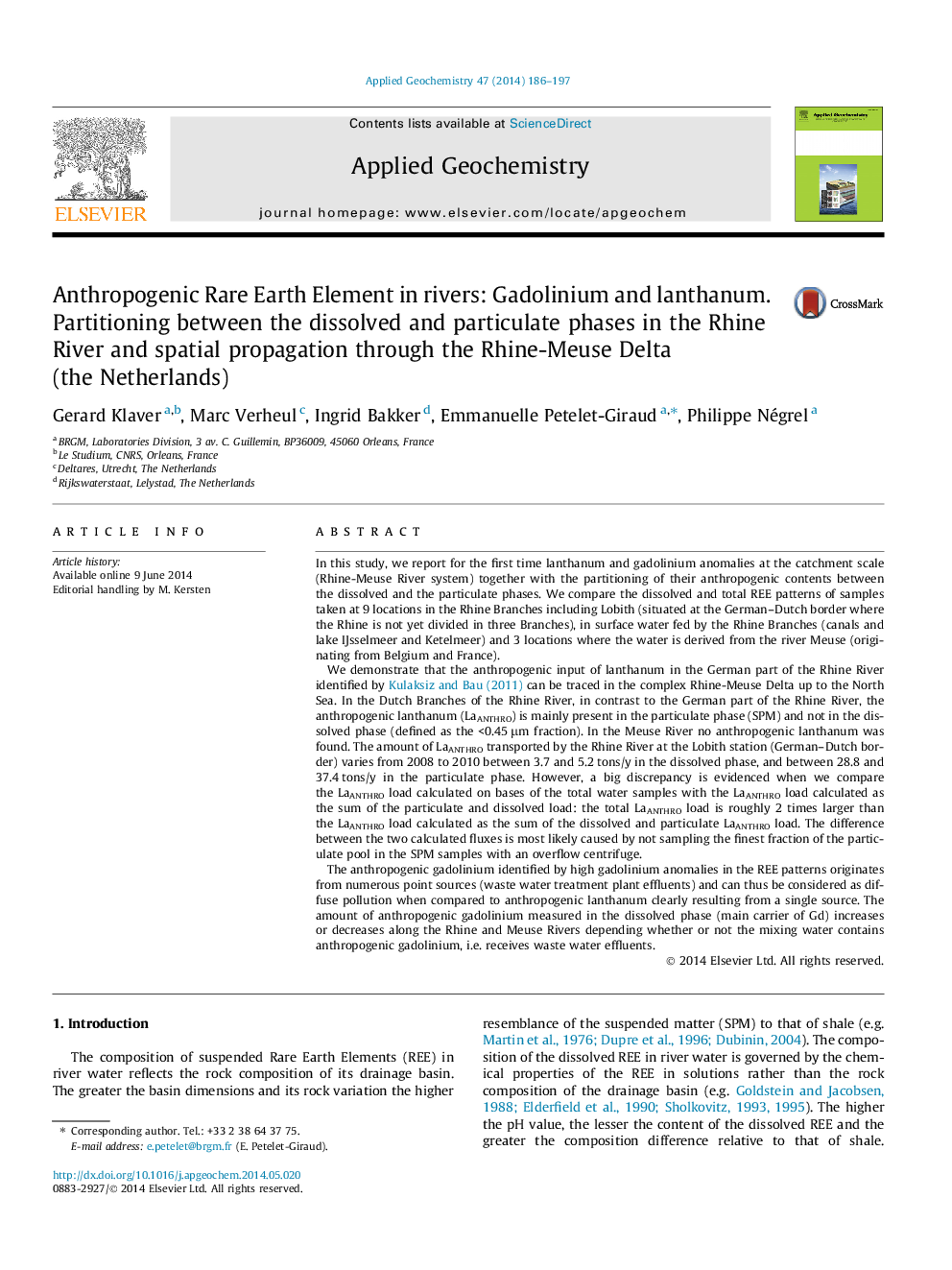| Article ID | Journal | Published Year | Pages | File Type |
|---|---|---|---|---|
| 4435751 | Applied Geochemistry | 2014 | 12 Pages |
•We report for the first time lanthanum and gadolinium anomalies at catchment scale.•Partitioning of their anthropic contents between dissolved and particulate phases.•Anthropogenic lanthanum (LaANTHRO) is mainly present in the particulate phase.•Anthropogenic gadolinium (GdANTHRO) is mainly present in the dissolved phase.
In this study, we report for the first time lanthanum and gadolinium anomalies at the catchment scale (Rhine-Meuse River system) together with the partitioning of their anthropogenic contents between the dissolved and the particulate phases. We compare the dissolved and total REE patterns of samples taken at 9 locations in the Rhine Branches including Lobith (situated at the German–Dutch border where the Rhine is not yet divided in three Branches), in surface water fed by the Rhine Branches (canals and lake IJsselmeer and Ketelmeer) and 3 locations where the water is derived from the river Meuse (originating from Belgium and France).We demonstrate that the anthropogenic input of lanthanum in the German part of the Rhine River identified by Kulaksiz and Bau (2011) can be traced in the complex Rhine-Meuse Delta up to the North Sea. In the Dutch Branches of the Rhine River, in contrast to the German part of the Rhine River, the anthropogenic lanthanum (LaANTHRO) is mainly present in the particulate phase (SPM) and not in the dissolved phase (defined as the <0.45 μm fraction). In the Meuse River no anthropogenic lanthanum was found. The amount of LaANTHRO transported by the Rhine River at the Lobith station (German–Dutch border) varies from 2008 to 2010 between 3.7 and 5.2 tons/y in the dissolved phase, and between 28.8 and 37.4 tons/y in the particulate phase. However, a big discrepancy is evidenced when we compare the LaANTHRO load calculated on bases of the total water samples with the LaANTHRO load calculated as the sum of the particulate and dissolved load: the total LaANTHRO load is roughly 2 times larger than the LaANTHRO load calculated as the sum of the dissolved and particulate LaANTHRO load. The difference between the two calculated fluxes is most likely caused by not sampling the finest fraction of the particulate pool in the SPM samples with an overflow centrifuge.The anthropogenic gadolinium identified by high gadolinium anomalies in the REE patterns originates from numerous point sources (waste water treatment plant effluents) and can thus be considered as diffuse pollution when compared to anthropogenic lanthanum clearly resulting from a single source. The amount of anthropogenic gadolinium measured in the dissolved phase (main carrier of Gd) increases or decreases along the Rhine and Meuse Rivers depending whether or not the mixing water contains anthropogenic gadolinium, i.e. receives waste water effluents.
